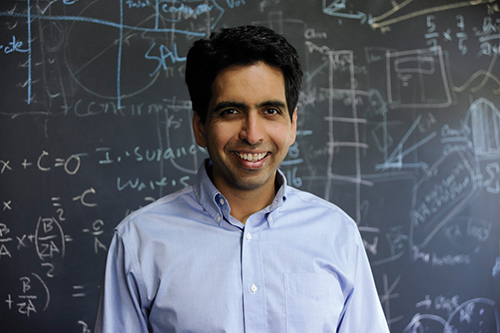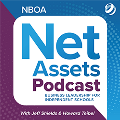Article by Jeffrey Shields and Sal Kahn
By welcoming opportunities for online instruction, can bricks-and-mortar-based independent schools paradoxically strengthen their ability to deliver best-in-class education to preK–12 students? Sal Khan says yes. The visionary founder of Khan Academy, which hosts more than 6,500 free online videos on topics from linear algebra to finance and capital markets, chats with NBOA President and CEO Jeff Shields about how online learning can make better use of classroom time.
Jeff Shields: Where did the idea for Khan Academy originate?
Sal Khan: Well before Khan Academy existed, I had daydreamed about the notion of tools that could help people learn at scale. When I first made YouTube videos to help my cousins understand math, I realized that these videos were also helping many other people tap into their potential. That led me to pursue building Khan Academy, now its own site, with a range of topics from math to modern history.
JS: What can nonprofit independent schools learn from the success of Khan Academy?
SK: It’s clear that there’s a lot of student demand for learning at one’s own time and place outside of the classroom. Independent schools can leverage that demand to free up class time for Socratic dialogue, peer-to-peer learning and teaching—all sorts of things.
JS: Do you see Khan Academy as a potential collaborator or competitor of independent schools?
SK: No, I see it as the exact opposite. If lecture and exercises can happen at one’s own time and pace, and at home, in the car, etc., this actually frees up the classroom to spend more time on independent learning. Already we’re seeing many independent schools move toward a mastery-based model that frees up class time by allowing students to progress at their own pace.
JS: How will Khan Academy continue to distinguish itself among an increasingly competitive preK–12 landscape?
SK: Our goal is: If we can give students the intuition to understand material, and if we do it well, there’ll always be a need. As a nonprofit with a mission, we believe that the more people who are offering similar services, the better.
JS: What advice would you give to nonprofit independent schools regarding their adoption of education technology practices?
SK: Never adopt technology for technology’s sake. Always think about what the pedagogical goal is; e.g., I want to have mastery-based learning versus more seat time. You’ll need to think about time and pace, offering assessments on-demand etc.—and you’ll look to see whether there are tools that help do this. It should always be that the pedagogy drives the adoption of technology.
JS: How do you see technology changing preK–12 education five to 10 years from now?
SK: One-pace-fits-all lecturing will gradually be diminished over time and will be replaced with more people-based activities. There’ll be a move away from a one-pace-fits-all model, which results in variable outcomes of student understanding, and a move toward a more competency-based model. This will free up class time to work on projects and open-ended exploration, for example. Teaching will become much more collaborative when you liberate a structure from the lecture model and turn it into a room of peer-to-peer interaction and learning.
JS: What’s next on the horizon for Khan Academy?
SK: We believe so strongly that a physical experience is key to an ideal education that we have created a small school below our offices. We’re hoping to share our learnings—both positive and negative—with schools around the world. We’d like to understand the best use of the physical and virtual combined.



